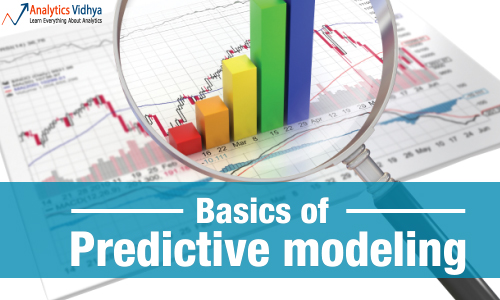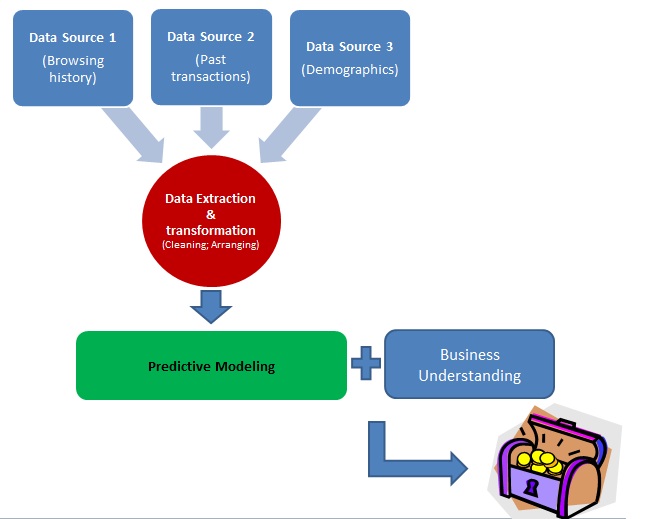Imagine how the world would change when any advertisement you receive is only about a product you are interested in. How beautiful it would be to receive information only about relevant products? How efficient would it be when you get all the required grocery items in first aisle? How much can mankind gain by being able to predict your diseases by looking at historical medical record and current symptoms?
All of this can be done by using power of predictive analytics. Many companies are already using this and becoming better and sharper with their targeting. They are able to get more than 100% response uplift from their marketing campaigns by predicting the need of customers and communicating with relevant products only.
So what is Predictive Analytics and how can it help?
According to Gartner:
Predictive modeling is a commonly used statistical technique to predict future behavior. Predictive modeling solutions are a form of data-mining technology that works by analyzing historical and current data and generating a model to help predict future outcomes
Simply put, predictive analytics uses past trends and applies them to future. For example, if a customer purchases a smart phone from a e-commerce website, he might be interested in it’s accessories immediately. He might be a potential customer for phone battery a few years down the line. Currently, chances of him buying accessory of a competitor smartphone are relatively bleak.
While the example might sound simple, imagine doing this for thousands of categories you might be selling. With in those thousands of categories, there might be multiple options (hundreds of covers, pouches, stylus…). Further, even if you have a thousand visitors every day (small number of many e-retailers), predicting the next purchase without data based decisioning for these customers might become impossible.
This is exactly where predictive analytics will come to your help (remember Amazon helping you out with, You might also like….).
I understand how predictive analytics can help, what do I do next?
If you are a business owner who wants to harness business analytics, you need to setup an Analytics team. I’ll cover details of setting this up sometime later. This post is for people wanting to learn the art of Predictive Analytics.
Following is a typical life cycle of building predictive models:
The first step in any predictive model is to collate data from various sources. This can be data you own about your customer (like pages visited in past, products purchased in past), or data which the customer has provided (e.g. Address, Name, Age etc.).
This data needs to be cleaned and arranged in a structure so that it can be analyzed easily. This structure needs to be in sync with various business hypothesis. For example, if business hypothesis is that particular age / gender group may have higher likelihood to purchase certain set of products, Age and Gender needs to be attributed at customer level.
Once these data sets are ready, we then use various predictive modeling techniques and business understanding to come out with various business insights (nuggets of gold). These insights can then be used in marketing / web site layout to increase efficiency.
In one of the future posts, we will go through these steps using a data set and case study to bring out these aspects.
In the meanwhile, if you have any examples where predictive modeling has helped or a business problem where predictive modeling can help, please let me know.








Can you share some real life examples and give us a detailed document , explaining each of the above steps mentioned by you.
Predictive modeling can also help in analyzing power consumption pattern of consumers.
yes I am also totally agree with siddharth. Sir could you please share detailed documents related to predictive modelling